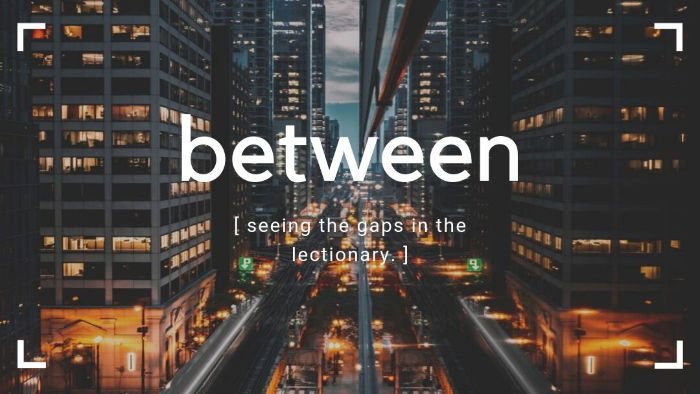A look at the gaps in the lectionary.
This week: the gap between
The text: John 15:18-16:3
This coming Sunday is Whitsunday, the Day of Pentecost. The day we celebrate the coming of the Holy Spirit. Most of us will be focused on that, particularly drawing from the dramatic Acts reading.
But perhaps we will take interest in the gospel, focusing on Jesus’s words instead. This, of course, is the point of these “between” pieces—that we follow the gospel. Not to assume you will, but if you do, here’s what we’re missing!
Last week, we jumped from the middle of chapter fifteen to the the beginning of seventeen. This week, we split the difference, jumping back to a place early in John sixteen.
This means that last week’s between still stands as useful for us. But I think the previous weeks also ought to be revisited. Especially the gaps between Easter 3 & 4 and Easter 4 & 5. There, I outline that the overarching weight of Jesus’s approach to Jerusalem is the seeking of his death by powerful forces.
The historical echo for the modern American reader is no doubt the weight experienced by Martin Luther King, Jr. A weight, not only of expectation, but of violent, vigilant oppositional rage. He walked daily with very real threats of violence. And these were not from random racists, but from police, judges, mayors, businessmen, state and federal leaders, and Hoover’s FBI.
The very idea that all of these powerful people really had designs of their own to murder King threatens the well-intentioned peace of moderate people. But it was real and very much at play in King’s daily life.
A mixed focus
The need for us, then, begins with seeing the problem. And then to listen to Jesus’s response to it.
It is that simple, but I’m not convinced we fully understand what that means.
The problem is that “the way of the world” is the world we swim in and deem as normal. And it has many good things about it that align just fine with Jesus’s Way of Love. But not all of it. And certainly not any of the violent and exploitative bits.
And this is where we get mixed up about it. We think the world’s -isms are the limits of the debate. We want to talk about capitalism or communism and not actually recognize the ways God’s economic views fit neither system and more: they are rendered weak and insecure by them.
But it is, for many Americans, the need to defend capitalism from any critique that serves as a prime example of how we might see the central problem Jesus is naming.
That any children of God would defend against all critiques of capitalism shows a greater alignment to capitalism (and the world) than to God. For the Bible is full of critiques of the thinking that undergirds capitalism. And therefore, to defend capitalism in all things, and particularly against God’s critiques of it, is choosing wrongly.
The Different Way
The call to live differently, then, for us, must include the consideration of such broken allegiances.
It is easy to live as Christians in the Western World given the preferential treatment for Christians in the culture. But it is hard to follow the Way of Jesus here for our values are frequently so misaligned.
For weeks now, I’ve ruminated about this misalignment having implications for us as individuals and as a community. That there are challenges both for us in our daily lives and communities and that there are pressures upon us from each other and bigger systems of culture.
Our call as Christians has always been about following Jesus’s way above our own and above our nation’s. And this is so frequently centered into traditional Western debates about individual piety and corporate responsibility.
The few glimpses in our world where we might see a more Christlike response often come from people walking a different way from our expectations and our sense of safety and decorum.
Here, the best examples often end up blending together: mystics and activists. People whose spiritual lives transcend the customary boundaries while also intentionally living out patterns of belief and behavior that match.
I suspect that the way one responds to a picture of a protestor says a lot about their comfort with following the different Way of Jesus.
